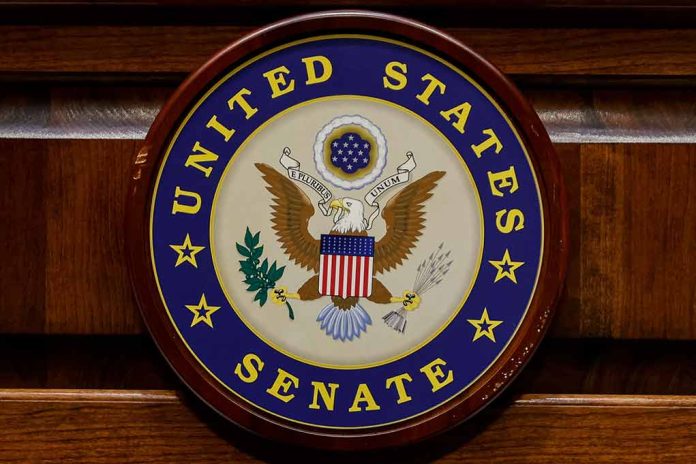
GOP Senate takeover possible as Montana, Texas, and Florida races tilt Republican.
At a Glance
- Republicans need just two seats to reclaim Senate control
- GOP candidates lead in crucial Montana, Texas, and Florida races
- Democratic Sen. Joe Manchin’s retirement opens door for Republican gain in West Virginia
- Seven other Democratic-held Senate seats remain competitive
- Senate control will shape the next president’s agenda and appointments
Montana Upset: Sheehy Leads Tester
In a stunning development, Republican newcomer Tim Sheehy has taken an eight-point lead over Democratic incumbent Jon Tester in Montana’s Senate race. Sheehy, a businessman and former Navy SEAL with no prior public office experience, is leading Tester 52% to 44% according to the latest New York Times/Siena College poll. This upset in a traditionally conservative state could be the first domino to fall in the GOP’s path to Senate control.
The Montana race is pivotal for Republicans, who need to gain just two seats to reclaim the Senate majority. With Democrats currently holding a slim 51-seat majority, every race counts. The GOP’s strong showing in Montana, coupled with promising leads in Texas and Florida, signals a potential power shift that could reshape American politics for years to come.
Cruz and Scott Fortify GOP Strongholds
In Texas, incumbent Senator Ted Cruz is holding his ground against Democratic challenger Colin Allred, leading by 4 points. Meanwhile, in Florida, Republican Rick Scott has established a commanding 9-point lead over Democrat Debbie Mucarsel-Powell. These leads in traditionally red states are crucial for the GOP’s Senate strategy, allowing them to focus resources on more competitive races elsewhere.
The Cook Political Report, a nonpartisan election analyzer, has categorized Florida as “likely Republican” and Texas as “lean Republican,” further bolstering GOP confidence. These ratings reflect the uphill battle Democrats face in trying to maintain their Senate majority in an increasingly polarized political landscape.
Democratic Vulnerabilities Mount
Adding to the Democrats’ woes is the retirement of Senator Joe Manchin III from West Virginia, a state that has been trending heavily Republican in recent years. This open seat is now considered a likely Republican pickup, further tightening the race for Senate control. With at least seven other Democratic-held Senate seats in play, including Arizona, Michigan, Pennsylvania, Nevada, and Wisconsin, the GOP sees a clear path to majority status.
In Michigan, while Democrat Elissa Slotkin currently leads Republican Mike Rogers in the race to succeed retiring Sen. Debbie Stabenow, the margin remains tight. Ohio presents another battleground, with Democratic Sen. Sherrod Brown locked in a toss-up race against Republican Bernie Moreno. These Midwest contests could prove decisive in determining which party controls the Senate come 2025.
Implications for Presidential Power
The outcome of these Senate races will have far-reaching consequences beyond Capitol Hill. Senate control will significantly influence the next president’s ability to implement their legislative agenda, secure Cabinet appointments, and shape the judiciary through judicial nominations. With the presidential race between Donald Trump and Kamala Harris expected to be closely contested, the composition of the Senate could be the key factor in determining the direction of American policy for years to come.
As we approach the 2024 elections, the stakes couldn’t be higher. A Republican Senate majority would serve as a critical check on a potential Democratic presidency or amplify the power of a Republican White House. For conservative voters frustrated with current policies on immigration, government spending, and social issues, these Senate races represent a crucial opportunity to reshape the political landscape and push back against what many view as an overreaching liberal agenda.






















